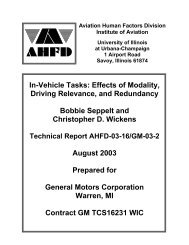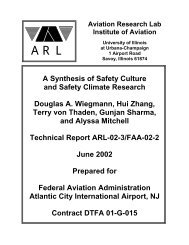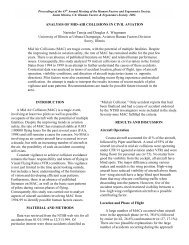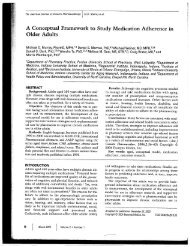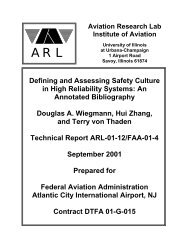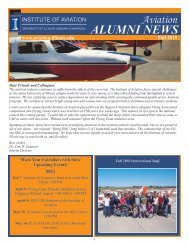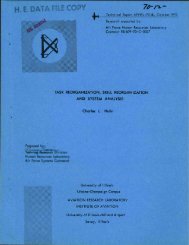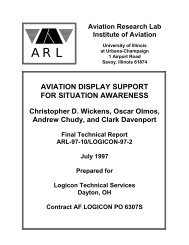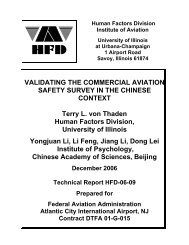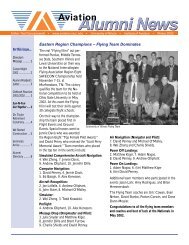Usability Questionnaire Results - Institute of Aviation - University of ...
Usability Questionnaire Results - Institute of Aviation - University of ...
Usability Questionnaire Results - Institute of Aviation - University of ...
Create successful ePaper yourself
Turn your PDF publications into a flip-book with our unique Google optimized e-Paper software.
abnormal problem. It is important to understand the natural associations and the context <strong>of</strong> thetask when deciding on the use <strong>of</strong> color.2.4 Display Arrangement and Visual SearchThe final human performance issue that needs to be addressed is visual search within thetask <strong>of</strong> process control. Characteristics <strong>of</strong> visual search have been identified in the literature andrelevant issues will be discussed here in terms <strong>of</strong> their implications for the design <strong>of</strong> displays andhuman performance on focused and divided attention tasks.Visual search is an important process for the detection <strong>of</strong> faults in process control. Faultdetection involves both selective and focused attention on an appropriate stimulus source. Visualsearch in displays normally occurs in a serial sequence where each item is inspected in turn(Neisser, Novick, & Lazar, 1964; Drury & Clement, 1978; Treisman & Gelade, 1980).Therefore, as the number <strong>of</strong> elements in a display increase, the search time increases as well.The importance to process control here is that a fault will take longer to detect when there aremore items to be scanned.However, there is <strong>of</strong>ten a trade<strong>of</strong>f between the number <strong>of</strong> items to scan versus thedistance between the items to scan (Drury & Clement, 1978; Teichner & Mocharnuk, 1979).Items that are spaced out at a wider distance do slightly increase search times. However, if thedistance between items is small and there are multiple items, a clutter effect is observed. Thescanning time increases slightly for items placed too close together. What this means fordetection <strong>of</strong> faults in process control displays is that a designer should not place items to bedetected to far apart, but also needs to beware <strong>of</strong> placing them too close together and creatingclutter.Target searching is driven in part by the expectation <strong>of</strong> where a target will be located(Wickens & Hollands, 2000). The areas where targets are most likely to be found are fixatedfirst and most frequently. Within process control displays, the expectations <strong>of</strong> where faults willbe displayed can be used to decrease search times if the faults appear in a localized area. If afault is expected, visual search may begin in the localized area first since that is where mostfaults are located and this will reduce visual search time.Visual attention is drawn to items that have high salience. Salience refers to the ability <strong>of</strong>an item to attract visual attention. Two important types <strong>of</strong> salience are color and highlighting.Fisher and Tan (1989) found that color can be used to increase the salience <strong>of</strong> an item throughhighlighting. Other forms <strong>of</strong> highlighting such as boxing, blinking, and reverse video could beused to increase salience, but were less superior to color. Highlighting techniques, such as theuse <strong>of</strong> color, can be used in process control displays to draw attention to important items. In thetask <strong>of</strong> fault detection, highlighting fault items should enhance detection time by drawing theuser’s attention to the item.Perceptual organization also affects visual search. Basic Gestalt principles such asproximity, similarity, common fate, good continuation, and closure help to preattentively groupitems together (Palmer, 1992). Due to high redundancy, displays using these gestalt principlesallow an accurate guess <strong>of</strong> the location <strong>of</strong> other items once one display item is located (Garner,17




